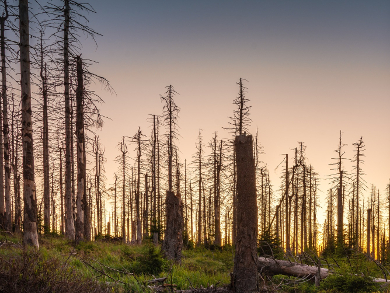Forest dieback was known as a big environmental problem in Europe in the 1980s and 90s. Acid rain caused by air pollution strongly affected trees at that time. Since stricter emission guidelines apply, this form of tree extinction has subsided. The forest seemed to be on the road to recovery. However, the extremely dry summer of 2018 has heavily impacted many trees. In addition, there are heavy infestations with bark beetles, which cause thousands of trees to die.
Cornelius Senf, Humboldt University Berlin, Germany, and University of Natural Resources and Life Sciences, Vienna, Austria, and colleagues have evaluated 24,000 satellite images taken between 1984 and 2016. On the basis of these images, the researchers were able to evaluate the development of the crown density and the forest condition for about 30 million hectares of forest in Central Europe over the last decades.
The data reveal that forest dieback has been ongoing in Central Europe. Canopy mortality in the forests has increased by 2.4 % per year. These results mean that tree mortality today tears more gaps into the forests of Central Europe than in the 80s and 90s. Every year, trees are lost on an area of about 3,000 km². The fact that this new forest dieback has hardly been noticed so far is due to its gradual progression and the death of isolated trees instead of whole areas.
The ongoing dieback is, above all, a consequence of climate change. Increasing dryness and rising temperatures weaken the trees and promote pest infestations. The bark beetle, for example, multiplies rapidly due to the warm and dry conditions. There are also more frequent heavy storms that uproot and break trees. The researchers believe that it is very likely that this process will continue and its effects increase. Another problem is the significant increase in logging in central Europe since the 1980s.
The researchers warn that forests are of great importance for the preservation of biodiversity and carbon storage. Forest dieback mainly affects old and big trees, which are especially valuable habitats for animals and effective CO2 sinks.
- Canopy mortality has doubled in Europe’s temperate forests over the last three decades,
Cornelius Senf, Dirk Pflugmacher, Yang Zhiqiang, Julius Sebald, Jan Knorn, Mathias Neumann, Patrick Hostert, Rupert Seidl,
Nat. Commun. 2018.
https://doi.org/10.1038/s41467-018-07539-6




